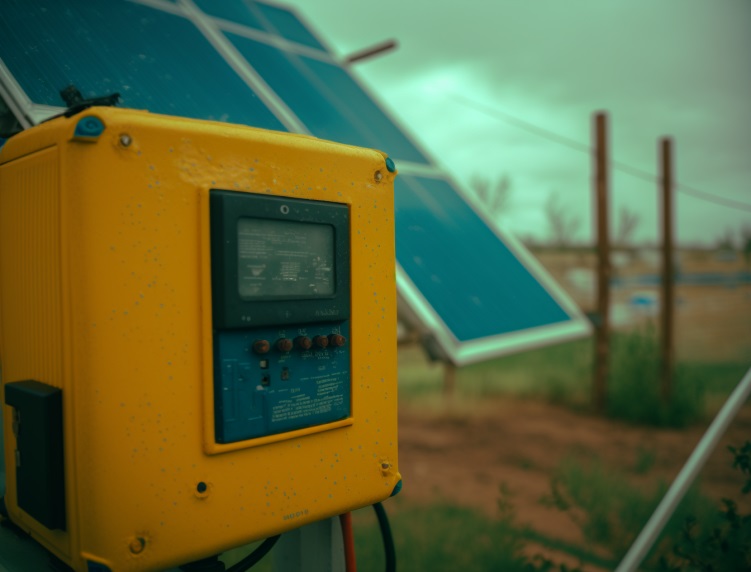IP Ratings for Inverters: Choosing the Right Protection
Inverters are essential for converting DC electricity from solar panels or wind turbines into AC electricity that can be utilized by homes or businesses.
However, outdoor environments can pose significant challenges to inverters, including exposure to dust, water, and other particles.
The IP (Ingress Protection) rating is a vital consideration for inverters, as it determines the level of protection provided against these environmental factors.
What Is IP Rating?
The IP rating, a standardized system derived from the International Electrotechnical Commission (IEC) 60529 standard, communicates the level of protection an electrical device possesses against both solid objects and liquids.
This rating is comprised of two numerical figures; the initial digit signifies the protection against solid objects, while the latter reveals the defense against liquids.
Regarding inverters, the IP rating is of significant importance due to their common outdoor installation, rendering them vulnerable to weather elements such as rain, snow, and dust.
A superior IP rating denotes that the inverter's enclosure is better equipped to deter the intrusion of these elements.
As such, the IP rating is crucial in ensuring that inverters can endure harsh environmental conditions and maintain proper functionality.
| 🏷️ IP Rating | 🛡️ Protection Against Solid Objects | 💧 Protection Against Liquids | 🏡 Suitable Environment | 📌 Example Use Case |
|---|---|---|---|---|
| IP21 | Objects larger than 12.5 mm | Vertically falling drops of water | Indoor installations | Factory or warehouse, not exposed to heavy rain |
| IP42 | Objects larger than 1 mm | Dripping water up to 15° tilt angle | Semi-protected outdoor installations | Covered patio or carport |
| IP65 | Dust, dirt, and particulate matter | Water jets from any direction | Fully exposed outdoor installations | Rooftop solar installations, solar farms |
The IP21 rating
The IP21 rating is a standardized code that describes the level of protection provided by an electrical enclosure against solid objects and water.
The first digit, “2”, indicates protection against solid objects larger than 12.5 mm, while the second digit, “1”, indicates protection against vertically falling drops of water.
While an enclosure with an IP21 rating can protect against large solid objects and vertically falling drops of water, it is not suitable for outdoor environments or locations with harsher weather or water conditions.
For indoor use, an IP21-rated enclosure might be sufficient to protect electrical equipment in factories or warehouses, where it is not exposed to heavy rain or water sprays.
However, for outdoor use or more severe environments, a higher IP rating or a different type of enclosure may be necessary.
The IP42 rating
The IP42 rating is a standardized code that measures the extent to which electrical enclosures can shield against solid objects and water. Its two digits reveal the level of protection against different environmental factors.
The first digit “4” denotes that the enclosure can safeguard against solid objects larger than 1mm. The subsequent number “2” signifies its ability to resist water dripping at a 15-degree angle from the vertical position.
The IP42 rating is appropriate for outdoor installations that experience some protection from elements such as dust or rain.
Nonetheless, it is crucial to enclose and cover the inverter to shield it from harsh environmental conditions. One can, for instance, place an IP42-rated inverter within a covered patio, carport, or an area with no direct exposure to water and dust.
The IP65 rating
The IP65 rating is a standard that specifies the degree of defense an electrical enclosure offers against piercing water and solid objects.
The rating is broken down into two digits, with “6” standing for particulate matter protection and “5” for water jet protection.

Regardless of direction, equipment with an IP65 rating would be totally shielded from both water and dust jets.
In industrial and outdoor applications where the enclosure may be exposed to severe elements like rain, dust, or dirt, the IP65 classification is frequently employed.
It is also suitable for cleaning locations where high-pressure water jets are used.
The equipment may have an IP65 classification, but that does not necessarily mean it is waterproof or resistant to corrosive substances. In these circumstances, higher IP ratings or customized enclosures should be employed.
Conclusion
In conclusion, the IP rating is a crucial factor in determining the appropriate inverter for various installations, as it indicates the level of protection an electrical device has against solid objects and liquids.
With inverters often exposed to outdoor environments, considering the IP rating is essential for ensuring their durability and optimal functionality.
IP21, IP42, and IP65 ratings provide varying degrees of protection, with IP21 suited for indoor installations, IP42 for semi-protected outdoor installations, and IP65 for fully exposed outdoor installations.
Selecting the right IP rating for an inverter not only ensures its reliability but also reduces maintenance and replacement costs, ultimately providing a cost-effective solution for homes or businesses relying on solar or wind energy.


